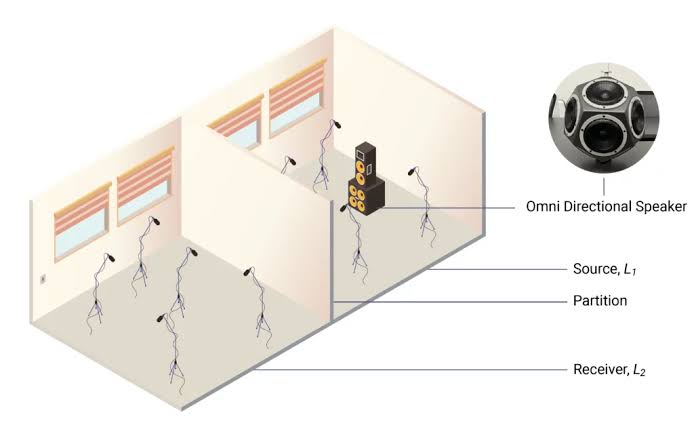
Workplace safety is a critical aspect of any organization’s operations. Employers have a responsibility to ensure that their employees are working in a safe and healthy environment. One often overlooked aspect of workplace safety is the impact of noise levels on employees.
High levels of noise can not only lead to hearing damage but also have a range of other health effects. This is where acoustic tests come into play.
What are Acoustic Tests?
Acoustic tests are assessments conducted to measure the levels of noise present in a particular environment. These tests help in determining whether the noise levels are within safe limits as defined by regulatory standards.
By conducting acoustic tests, employers can identify areas where noise levels are excessive and take necessary measures to mitigate the risks associated with high noise exposure.
The Effects of High Noise Levels on Employees
Exposure to high levels of noise in the workplace can have a significant impact on employees’ health and well-being. Prolonged exposure to loud noise can result in hearing loss, tinnitus, increased stress levels, and decreased productivity. It can also lead to other serious health issues such as cardiovascular problems and sleep disturbances.
Acoustic tests identify issues and guide treatment for clear, comfortable sound environments in places like auditoriums, offices, and studios.
Employers have a responsibility to provide a safe and healthy work environment for their employees, including minimizing exposure to excessive noise. Implementing noise control measures, providing ear protection, and creating quiet areas within the workplace can help reduce the negative effects of noise on employees.
Regular monitoring of noise levels and educating employees about the risks associated with high noise exposure are also important steps in protecting their health and well-being. By taking proactive measures to address noise hazards, employers can create a more productive and healthy work environment for their staff.
Regulatory Standards and Compliance
Many countries have established regulatory standards regarding acceptable noise levels in the workplace. Employers are required to comply with these standards to ensure the safety and health of their employees.
By conducting acoustic tests regularly, employers can ensure that they are meeting the necessary regulatory requirements and taking appropriate actions to protect their employees. Regular acoustic tests help employers ensure that they are meeting the necessary regulatory requirements regarding acceptable noise levels in the workplace.
This proactive approach not only helps in protecting the health and safety of employees but also demonstrates the employer’s commitment to creating a safe working environment. By monitoring and controlling noise levels, employers can prevent hearing damage, reduce stress levels, and improve overall employee well-being. Compliance with regulatory standards regarding noise levels is essential for maintaining a healthy and productive workforce.
The Benefits of Acoustic Testing
There are several benefits to conducting acoustic tests in the workplace. Firstly, it helps in identifying areas where noise levels are excessive and implementing control measures to reduce noise exposure. This, in turn, helps in preventing hearing damage and other health issues among employees.
Secondly, acoustic testing can help in creating a more comfortable and productive work environment by reducing noise-related distractions. Additionally, acoustic testing can also ensure compliance with occupational health and safety regulations regarding noise exposure limits. By regularly conducting acoustic tests, employers can demonstrate their commitment to providing a safe and healthy workplace for their employees.
Moreover, identifying and addressing noise issues through acoustic testing can lead to improved communication among employees, enhanced concentration, and overall job satisfaction. Ultimately, investing in acoustic testing can lead to a more efficient and harmonious work environment, benefiting both the employees and the organization as a whole.
Implementing Control Measures
Once acoustic tests have been conducted and areas of high noise levels have been identified, employers can implement control measures to reduce noise exposure. This can include installing soundproofing materials, using noise-canceling technology, providing employees with personal protective equipment such as earplugs or earmuffs, and modifying work processes to minimize noise generation.
By taking these steps, employers can create a safer and healthier work environment for their employees. Implementing control measures to reduce noise exposure in the workplace is crucial for protecting employees from potential hearing damage and promoting overall well-being. Employers should prioritize the implementation of soundproofing materials, noise-canceling technology, and personal protective equipment like earplugs or earmuffs to create a quieter work environment.
Additionally, modifying work processes to minimize noise generation can further contribute to reducing overall noise levels. By taking these proactive steps, employers demonstrate their commitment to the health and safety of their workforce, ultimately leading to a more productive and comfortable workplace.
Employee Training and Awareness
It is also essential to provide employees with training and awareness regarding the risks associated with high noise levels in the workplace. By educating employees about the potential health effects of noise exposure and the importance of using protective measures, employers can help in preventing hearing damage and other health issues.
Regular training sessions and awareness programs can also help in creating a culture of safety within the organization. Regular training sessions and awareness programs are crucial in creating a safe work environment. By educating employees about the risks associated with high noise levels in the workplace, employers can help prevent hearing damage and other health issues.
Providing information on the potential health effects of noise exposure and emphasizing the importance of using protective measures can go a long way in promoting a culture of safety within the organization.
Conclusion
In conclusion, acoustic tests play a crucial role in ensuring workplace safety by identifying areas of high noise levels and implementing control measures to protect employees. Employers have a responsibility to prioritize the health and well-being of their employees, and conducting acoustic tests is an important step in meeting this responsibility. By complying with regulatory standards, implementing control measures, providing employee training, and raising awareness about the risks of noise exposure, employers can create a safe and healthy work environment for everyone.





